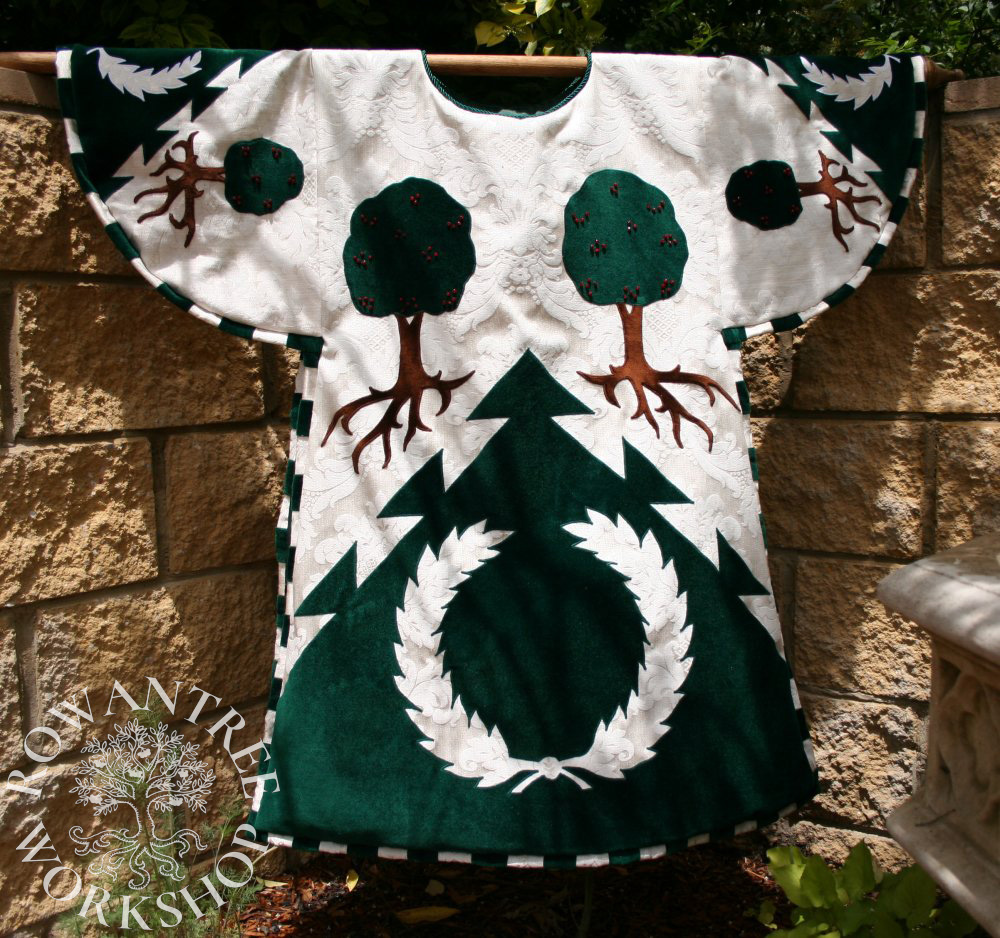A set of heraldic tabards, for use by the SCA Kingdom of Lochac.
The soon-to-be Kingdom of Lochac needed a new heraldic tabard, so I offered to make one. I’d made a few plain heraldic tabards in the past, but this one needed to much more ornate, in keeping with all the planned court pageantry.

My challenge was to make an heraldic tabard in keeping with medieval design and decoration, while being a practical garment in use. It would be worn by people of many shapes and sizes, over many years of use.
Research & Design
The Tabard or Houce (heuk) des Armes originated as a standard item of military clothing. Although it went out of everyday fashion in the late 15th century, it remained the standard costume of the herald until our current day.
In the middle ages, heralds wore the coat of the person they represented
“…to wear a coat of their master’s arms, wearing the same in conflict and tournaments, in riding through foreign countries, and at all great entertainments, coronations of kings and queens, and the solemnities of princes, dukes and other great lords.”
A Complete Guide to Heraldry (Fox-Davies, 1978).
The tabard was worn by heralds over their regular clothing, as their mark of office.
Both Fox-Davies and Heraldry Sources, Symbols and Meaning (Neubecker (1977) provide examples of medieval heraldic tabards, both extant and in various artworks. Images of obvious heraldic tabards are common from the 15th century onwards, and the style is remarkably similar across different western European countries..
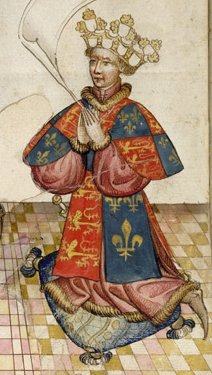
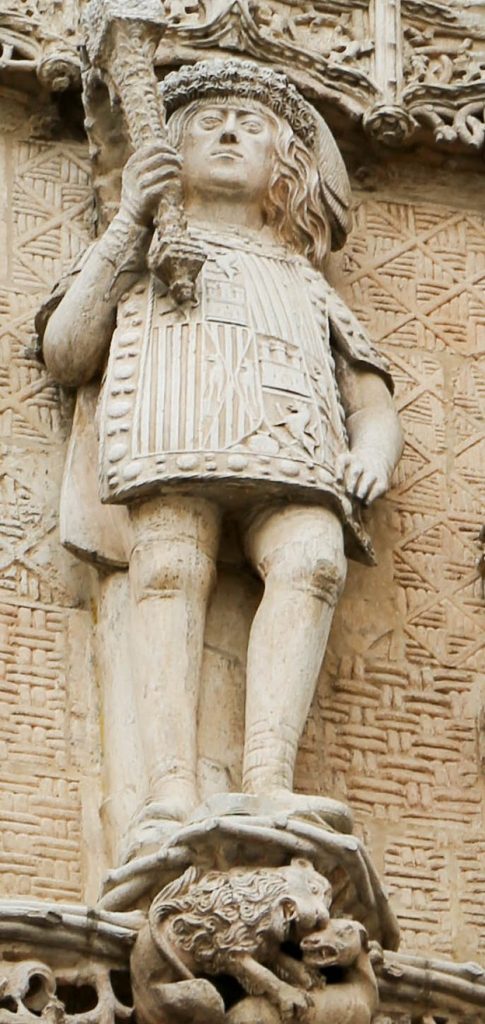
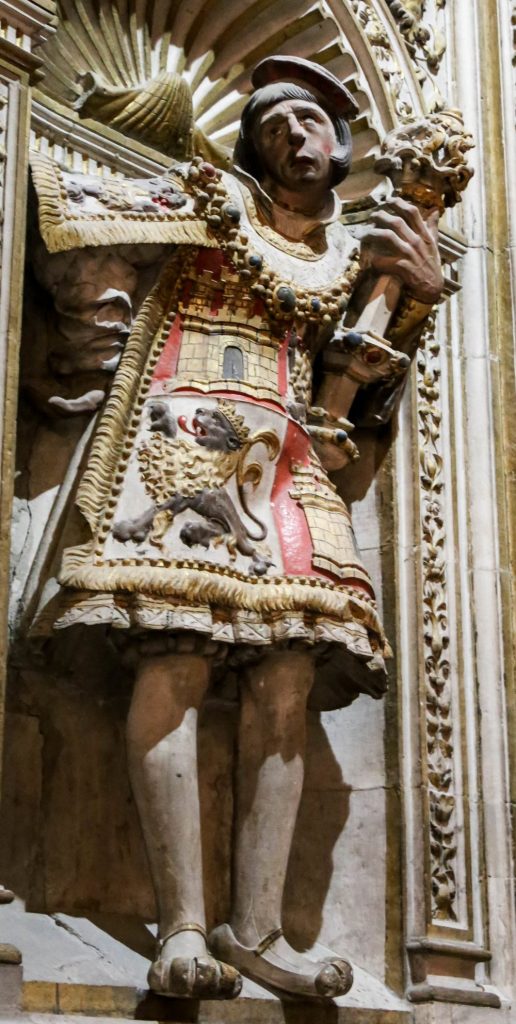
Although the extant examples show that higher-ranking heralds wore precious fabric, strict sumptuary laws appear to have been laid down in Queen Victoria’s time. The high court historical examples I have seen used a mixture of silk, satin, brocades and velvets, but the 16th century German example below is made of appliquéd wool, lined with linen.
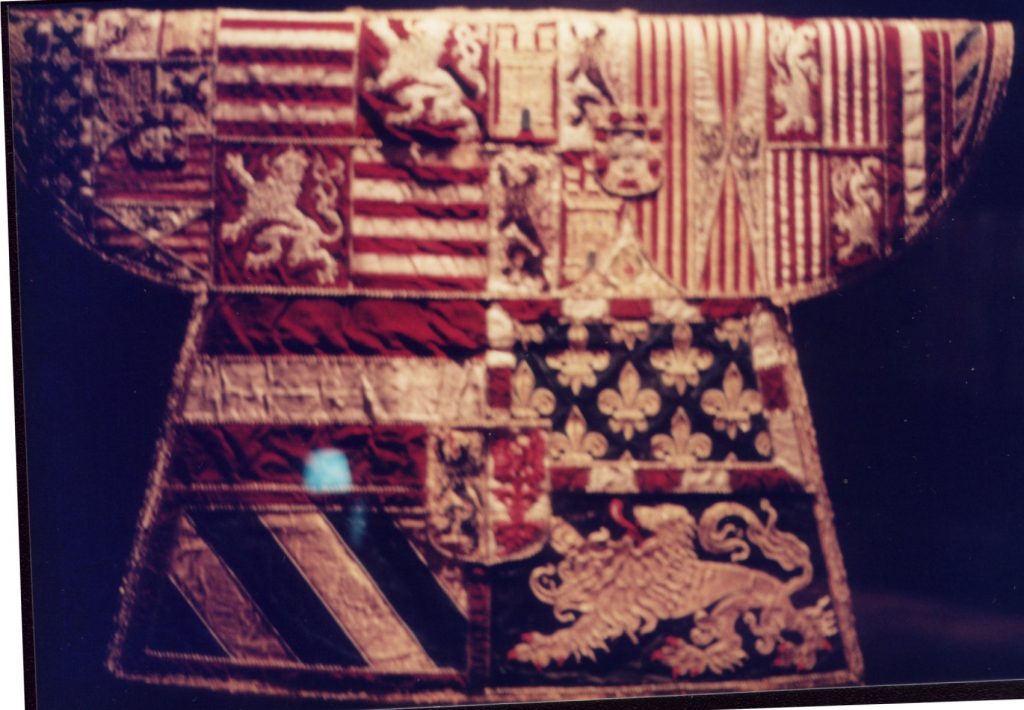
Photo: Robyn Spencer

Photo: Robyn Spencer
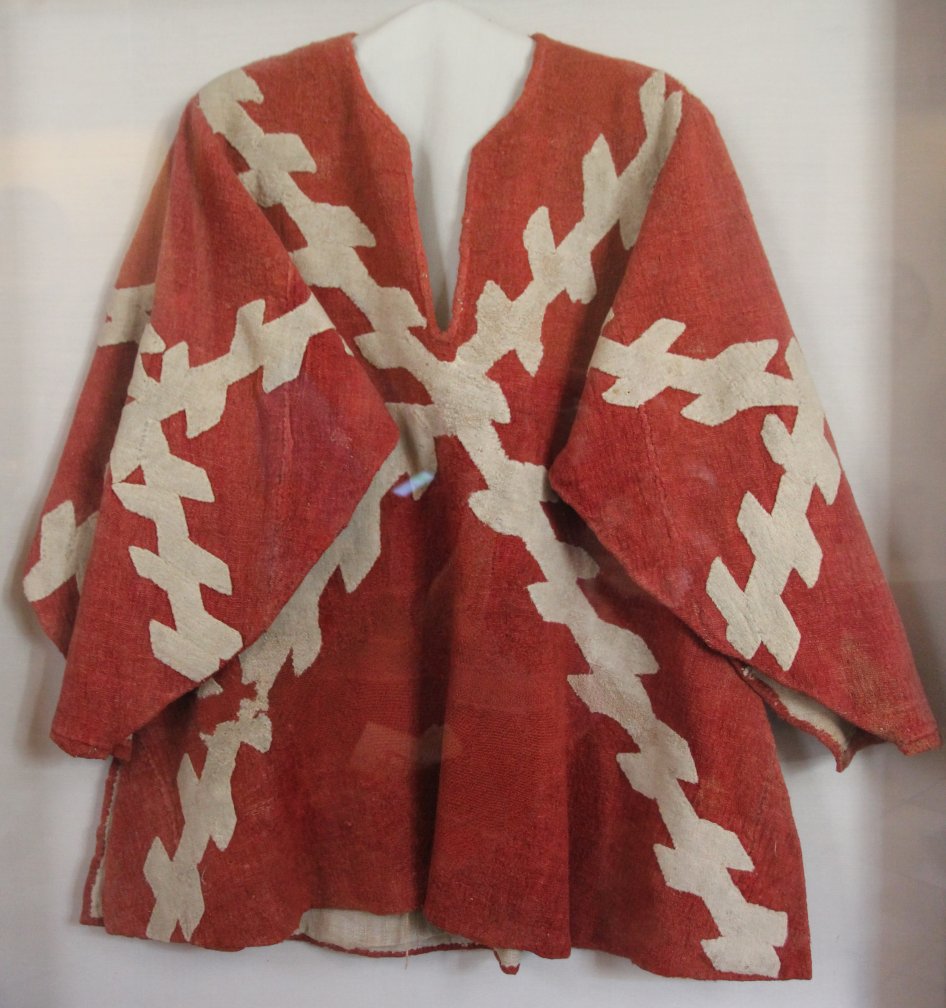
Photo: Robyn Spencer
Main field divisions and some ordinaries seem to be created by joining the cloth together, with charges appliquéd on top. Many tabards are further enriched by couching down braid or cord along the lines of division and around the charges. The fabric itself may be diapered with embroidery, or even enriched with spangles (sequins) or jewels. Similar enrichment techniques were also used on less grand fabrics.
Many tabards are edged with fringing, either in one colour or striped in two colours, which adds an extra level of richness and indicates the ceremonial nature of the garment.
I used modern materials (available, more robust) but otherwise tried to emulate the design of the historic examples as much as possible.
Construction
I patterned the tabard with a flared body, with attached curved sleeves and a wide open neck, large enough to fit most people. In keeping with the historic example, the heraldic device is displayed in full on front back and both sleeves – “Quarterly azure and argent, on a cross gules a crown between four mullets of six points, in canton a laurel wreath argent“.

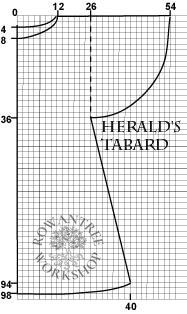
I machine-sewed alternating quarters of blue and white brocade together for each section. I constructed the crosses in strips of red velvet, turned the hems under and hand-applied them over the top. I machine-sewed fine 3 twist braid along the edges of the cross, using a cording foot and zig-zag stitch. At this point, I sewed the sections together to make the final garment.
I applied the charges (stars, crowns) using bond-web and machine applique, then hand-couched silver cord around the edge of each piece. I machine-sewed heavy furnishing braid around the neck and some wonderful rich furnishing fringe around the outside edge. Finally, I hand-sewed in a lining of bemsilk, so the tabard would slide easily over the under garments.
I did not take photos of the construction process, but I did write up the process and pattern in 2003, for broader use.
More tabards
Some years later, I made a couple of tabards in the same style for two other SCA groups – my former Barony (as a leaving gift) and my new one (as an arrival gift). I was not able to find appropriate fringing in the right colours for these tabards, so I made up a compony border.
